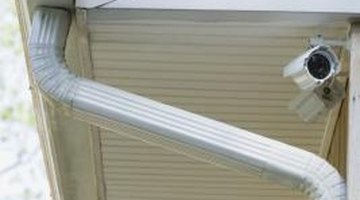Techniques for Soldering Gutters
Exterior gutters made of aluminum, steel, or copper often require soldering to hermetically join the individual sections together. Because of hot/cold temperature fluctuations and other stresses, caulk often does not remain as permanent as homeowners would like. Soldering gutters is similar to soldering water pipes, using the same tools and following similar precautions.
Cleaning and Prep

The ends of the joins must be clean and bare to properly accept the flux and solder. This is done by taking emery or pipe-cleaning paper and rubbing the ends until the metal is bare and shiny. Afterward, clean the ends with isopropyl alcohol to remove extra residual material.
Adding Flux
Flux is key to allowing the solder to flow evenly over the join. Flux is usually purple and gel-like in nature. The flux should be evenly "painted" over the inner edge of one section of the gutter, with the corresponding outer edge also receiving a flux application.
Safety Issues
Given that many gutters are up against siding or shingles, it is often necessary to set a heat shield between the gutter and the flammable surface. Aluminum foil is not suitable for this. Specialized shields or, in a pinch, steel baking sheets can be used.
Fitting and Heating
Press the ends of the gutters together, so that the two ends are firmly joined. Heat the ends of the gutters with a high-wattage, hand-held torch while placing the solder against the join. Once the metal is sufficiently heated, the solder melts and wicks along the join, following the flux.
References
Writer Bio
David Lipscomb is a professional writer and public relations practitioner. Lipscomb brings more than a decade of experience in the consumer electronics and advertising industries. Lipscomb holds a degree in public relations from Webster University.
Photo Credits
- Thinkstock Images/Comstock/Getty Images
More Articles



